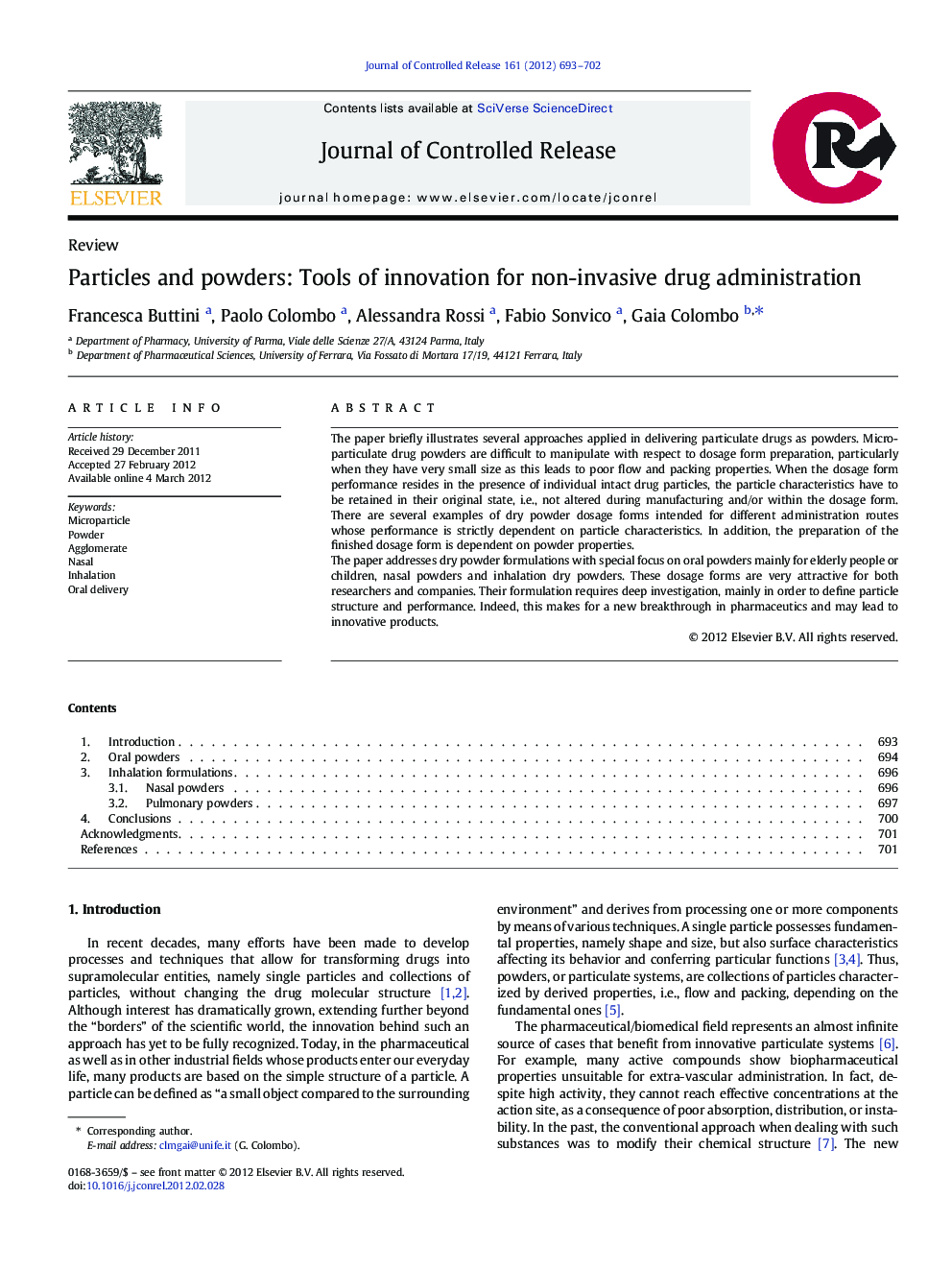| Article ID | Journal | Published Year | Pages | File Type |
|---|---|---|---|---|
| 1424443 | Journal of Controlled Release | 2012 | 10 Pages |
The paper briefly illustrates several approaches applied in delivering particulate drugs as powders. Microparticulate drug powders are difficult to manipulate with respect to dosage form preparation, particularly when they have very small size as this leads to poor flow and packing properties. When the dosage form performance resides in the presence of individual intact drug particles, the particle characteristics have to be retained in their original state, i.e., not altered during manufacturing and/or within the dosage form. There are several examples of dry powder dosage forms intended for different administration routes whose performance is strictly dependent on particle characteristics. In addition, the preparation of the finished dosage form is dependent on powder properties.The paper addresses dry powder formulations with special focus on oral powders mainly for elderly people or children, nasal powders and inhalation dry powders. These dosage forms are very attractive for both researchers and companies. Their formulation requires deep investigation, mainly in order to define particle structure and performance. Indeed, this makes for a new breakthrough in pharmaceutics and may lead to innovative products.
Graphical abstractOrdered mixture between coarse lactose particles and micronized drug as a dry powder formulation.Figure optionsDownload full-size imageDownload high-quality image (871 K)Download as PowerPoint slide
